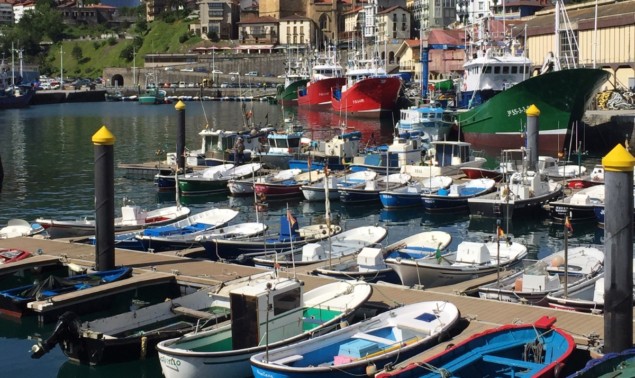
A wave-damping scheme that draws on the principles behind the much vaunted “invisibility shields” made from metamaterials could calm the waters for boats moored in harbours and ports. The team who came up with the idea have demonstrated that it works in a large wave tank, and hope soon to put it into practice on the coast of China.
The method involves manipulating water waves so that their amplitude falls to almost zero within narrow channels such as the spaces between jetties or wharves in a dock. Devised by civil engineer Zhenyu Wang of Zhejiang University in Hangzhou, physicist Huanyang Chen of Xiamen University, and their coworkers, it exploits principles originally applied in optics to shape and guide electromagnetic waves.
The general idea is that, by varying the refractive index in different regions of a transparent material, light waves passing through it can be locally enhanced or suppressed in ways that needn’t follow the normal laws of optics. Using materials with spatially varying refractive index – a measure of the propagation speed of electromagnetic waves – researchers have shown how to make “invisible” cloaking devices and other optical structures at the wavelengths of visible light.
The approach relies on classical wavelike behaviour, and so the same mathematical principles can be used to control and direct other kinds of waves. It has already been applied previously to acoustic waves, water waves and even seismic waves, raising the prospect of making cloaks that shield buildings or whole cities from earthquakes.
Redirecting wave energy
The ability to control sea waves has obvious potential in marine engineering. Wave suppression, for example, could reduce coastal erosion and drag on ships, while focusing ocean waves could be valuable for energy generation. But although such ideas have been explored theoretically, relatively little has been done to test them experimentally.
That’s where Wang’s team comes in. At Zhejiang University they have a large water tank, 60 m long by 1.2 m wide, for simulating the marine environment. Wang has teamed up with theorist Chen, who has worked previously on using transformation optics to devise new types of lens, light concentrators and other structures. Having moved from inland Suzhou University to coastal Xiamen, one of China’s major ports, Chen has become attuned to the possibilities of the theory for marine applications.
Wang explains that rather than trying to block or resist ocean waves using breakwaters, as in conventional approaches for protecting harbours, they redirect the wave energy. “Our new way of thinking is to defuse and manipulate water waves,” he says.
The team has designed a water-wave damping structure simple enough to be implemented cheaply in real-world settings. The idea is straightforward: for water waves, the equivalent of a refractive index can be simply the water depth. To manipulate waves one then needs only to place a structure on the seabed that makes the water locally shallower.
However, to get the optimal effect this depth must be altered with a smooth and carefully shaped gradient. The researchers calculated that submerged batons with gently rounded ends either side of a water channel could concentrate the energy of an incoming plane wave within the regions above the batons themselves, leaving the centre of the channel calm. “By arranging the refractive index profile, we can squeeze the waves along the two sides of the channel and create a cloaking region [in the middle],” says Chen.
Putting it to the test
Their tests in the wave tank, using batons 6 m long and 15 cm wide placed against the two edges, confirm the idea. A toy boat placed in the channel centre in water about 16–18 cm deep looks more or less immobile to the naked eye as waves of frequencies of around 0.6–0.9 Hz and heights of around 1 mm enter the “shielded” region. But when floating directly over the submerged batons, the boat bobs up and down visibly with an amplitude of up to 6 mm. The cloaking will work for a wide range of wave frequencies.
“For a real port location, we know the most frequently occurring period and wavelength of water waves,” says Wang. “Then we can design the gradient water depth and the corresponding underwater structure accordingly”. He thinks that the method might be most easily applied to yacht docks, and the team is now hoping to try out the idea in Xiamen or the Zhoushan archipelago in Hangzhou Bay, where Zhejiang University has an island with a facility for running experiments under ocean conditions.
Wave suppression “is an important goal for port and harbour applications”, says physicist Léo-Paul Euvé of ESPCI in Paris, “and I think this system could be applied in a real-world setting.” Currently ports tend to use large dikes or barriers to block waves, he says, and a system like this “could be an interesting alternative”. He adds that by concentrating the wave amplitude in a small area, the design “could be also interesting for extracting wave energy”.
This is “beautiful physics” says Che Ting Chan of the Hong Kong University of Science and Technology, an expert on optical and acoustic metamaterials. But he stresses that “the experiments are carried out in a highly controlled environment, and the real world is way more complicated” – for example because of issues like nonlinearity of the waves, viscosity, turbulence, and irregularities on the bottom surface of a channel. So he says that, although the method “might be useful in calm harbours or channels, I wouldn’t dare to recommend its use to taming hurricane or tsunami waves, which are very nonlinear and violent.” Chen agrees: “Tsunamis will not be easy to handle, and nonlinear effects would need to be considered [for that]”, he says.
- The full results are reported in Physical Review Letters



